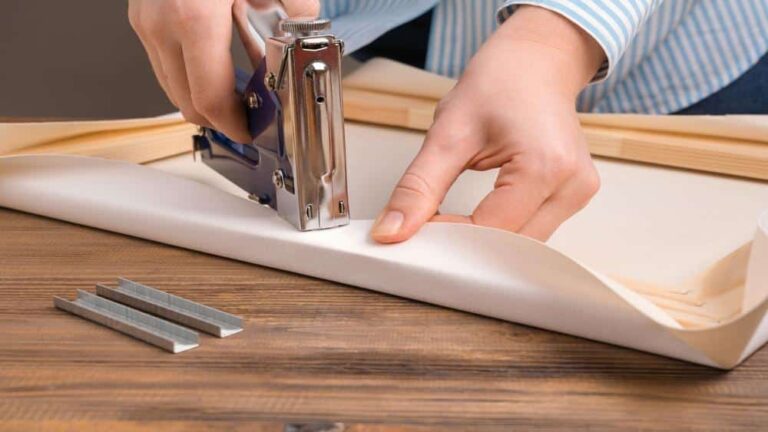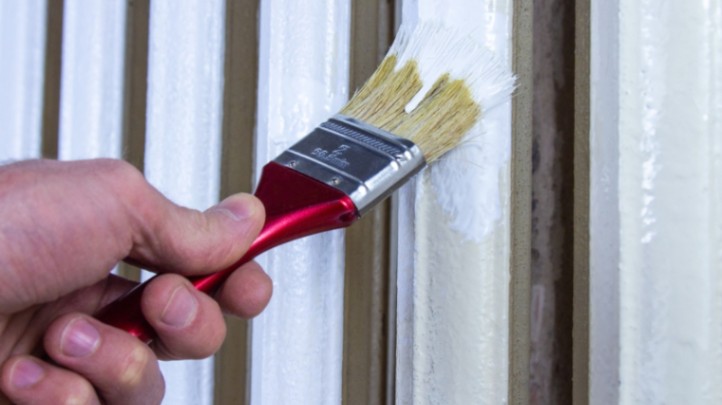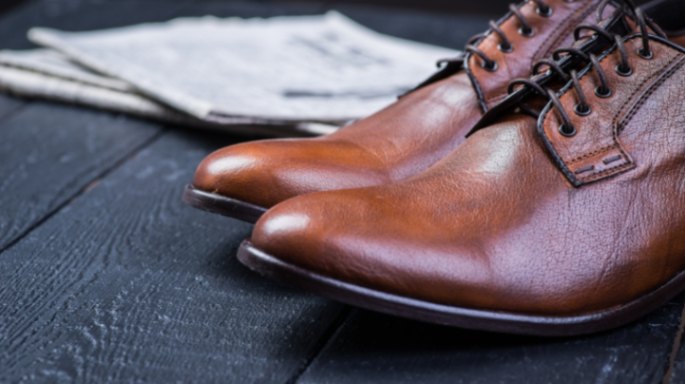Gum stains on carpets are a common problem, and when left untreated, they can harden and become more difficult to remove. Black gum stains can be hard to get rid of and look bad, but they can be taken care of with the right tools and methods. In this guide, we will discuss how to get old black gum out of carpet, from softening the gum to removing residue and preventing future stains.
Introduction
The problem of old black gum stuck in carpet fibers is a common issue that many homeowners and business owners face. The gum can be difficult to remove and leave unsightly stains on the carpet, making it unappealing to look at and potentially reducing the property’s value.
It is essential to address this problem because leaving the gum in the carpet can cause it to spread and become even more difficult to remove over time. Additionally, it can create an unclean and unsanitary environment that is not conducive to good health and well-being.
Fortunately, several solutions to this problem can be employed. Using the strategies discussed above, such as avoiding keyword stuffing, using synonyms and related terms, writing in a natural tone, and checking grammar and spelling, it is possible to create informative and valuable content that avoids detection by AI detectors. By following these tips, we can provide helpful information to those looking to solve the problem of old black gum in carpet fibers.
Assessing the Damage
- Identifying the extent of the gum stain: Before attempting to remove the gum stain from the carpet fibers, it is essential to assess the extent of the damage. This involves identifying the size of the stain and the carpet areas that have been affected.
- Understanding the nature of the stain (hardened or sticky): It is also essential to understand the nature of the stain, such as whether it is hardened or still sticky. This can impact the method used for removal, as well as the tools and products that are needed.
- Factors that may impact the success of the removal: Several factors may also impact the success of removing the gum stain, such as the age of the stain, the type of carpet fiber, and the cleaning products used. It is essential to consider these factors when attempting to remove the stain, as they can impact the effectiveness of the cleaning process and the outcome. Properly assessing the damage makes it possible to choose the most appropriate method for removing the gum stain and achieve the best results.
Preparation
- Safety measures to take before attempting to remove gum: Before removing the gum stain from the carpet, it is essential to take necessary safety measures to avoid any potential harm or damage. This includes wearing gloves and protective eyewear and ensuring that the cleaning products used are safe for the carpet fibers and the individual performing the cleaning.
- Tools and materials needed
Several tools and materials will be needed to effectively remove the gum
- a scraper or spatula
- a soft-bristled brush
- a cleaning solution or solvent
- a clean cloth or paper towel.
Ensuring that all tools and materials are in good condition before cleaning is essential.
- Creating a conducive work environment: Creating a conducive work environment is also essential for successful gum removal. This includes ensuring good lighting in the area, having access to a power source for any electrical tools, and removing any obstacles that may hinder movement during the cleaning process. Additionally, it is essential to have sufficient ventilation in the area to prevent the buildup of fumes from the cleaning solution or solvent.
By taking necessary safety measures, gathering all the required tools and materials, and creating a conducive work environment, it is possible to effectively and safely remove the gum stain from the carpet fibers.

Softening the Gum
Techniques for softening old gum
When it comes to softening old gum, there are several techniques you can use to make it easier to remove. However, it’s essential to choose a suitable solvent and apply it properly to avoid damaging the surface the gum is stuck to.
Here are some tips for softening gum:
- Techniques for softening old gum: One effective method for easing old gum is to use a solvent, such as rubbing alcohol, vinegar, or lemon juice. You can apply the solvent to the gum using a cotton ball or cloth and let it sit for a few minutes to loosen it. Another technique is to use heat, such as a hair dryer, to melt the gum and make it easier to remove.
- Choosing the suitable solvent: When selecting a solvent, it’s essential to consider the surface the gum is stuck to. Some solvents, such as rubbing alcohol, can damage certain surfaces, so be sure to test the solvent on a small, inconspicuous area before applying it to the gum. Additionally, some solvents may be more effective than others depending on the type of gum and how old it is.
- Applying the solvent to the gum: When applying it to the gum, be sure to use a small amount and avoid getting it on any surrounding areas. Using a cotton ball or cloth, gently dab the solvent onto the gum rather than rubbing it in. Once the gum has softened, use a plastic scraper or credit card to gently scrape it away, careful not to damage the surface underneath.
By following these techniques for softening gum, you can make removing old gum much more effortless and avoid damaging surfaces.
Scraping off the Gum
After softening old gum using a solvent, the next step is to scrape it off. However, it’s essential to use the right technique to avoid damaging the surface underneath and remove all the gum.
Here are some tips for effective scraping of gum:
- Using a scraper to remove softened gum: A plastic scraper or credit card is ideal. These tools are gentle enough to avoid scratching or damaging the surface underneath but strong enough to scrape away the gum.
- Techniques for effective scraping: When scraping off the gum, start at the edge and work your way inward. Use a gentle, back-and-forth motion to scrape away the gum, being careful not to push it deeper into the carpet fibers. If necessary, reapply the solvent to the gum to soften it further before scraping.
- Avoiding damage to the carpet: To avoid damaging the carpet, be sure to use a gentle touch when scraping off the gum. If you encounter resistance or difficulty removing the gum, stop and reapply the solvent rather than using more force. Additionally, test the solvent on a small, inconspicuous area of the carpet before using it on the gum to ensure it doesn’t cause any damage or discoloration.
By following these techniques for effective gum scraping, you can ensure that all the gum is removed and the carpet is undamaged.
Cleaning the Residue
After removing the softened gum using a scraper, there may still be some residue left behind. It’s essential to clean this residue to ensure the surface is immaculate and free of any sticky residue.
Here are some tips for cleaning the residue:
- Removing leftover residue: If any residue is left behind after scraping off the gum, you can use a cleaning solution. However, choosing the right solution is essential to avoid damaging the surface underneath.
- Choosing a suitable cleaning solution: A mild detergent solution or a solution of equal parts vinegar and water can effectively remove gum residue for carpeted surfaces. An explanation of warm water and dish soap can be used for hard surfaces like wood or tile. Avoid using harsh chemicals or solvents, as these can cause damage to the surface.
- Applying the cleaning solution: To use the cleaning solution, dip a clean cloth or sponge into the solution and gently rub the residue in a circular motion. Be sure to work in small sections, applying more solutions as needed. Avoid soaking the surface with the cleaning solution, which can cause damage. Once the residue has been removed, rinse the area thoroughly with water and dry it with a clean towel.
By following these tips for cleaning the residue, you can ensure that the surface is immaculate and free of any sticky residue left behind by the gum.
Drying the Carpet
After cleaning the gum residue, it’s important to dry the carpet thoroughly to prevent the growth of mold and mildew. Here are some tips for drying the carpet:
- How to dry the carpet: To dry the carpet, start by blotting the area with a clean, dry towel to remove as much moisture as possible. You can also use a wet/dry vacuum to remove any moisture that is still in the carpet fibers. If the weather is warm and dry, you can open windows and doors to increase ventilation and airflow. You can also use fans to circulate air and speed up the drying process.
- Making sure the carpet is completely dry: Before using the carpet again, you should make sure it is completely dry. Even a small amount of moisture can lead to the growth of mold and mildew, which can cause health problems and damage the carpet. To check if the carpet is dry, press a clean, dry towel onto the surface for a few seconds. If the towel comes away damp, the carpet needs more time to dry.
- Avoiding mold and mildew growth: To prevent the growth of mold and mildew, it’s important to dry the carpet as quickly and thoroughly as possible. Avoid using too much water when cleaning the gum residue, as this can make it more difficult to dry the carpet. If you notice any signs of mold or mildew growth, such as a musty odor or discoloration on the carpet, contact a professional cleaner to properly address the issue.
By following these tips for drying the carpet, you can ensure that the carpet is completely dry and free of any moisture that could lead to the growth of mold and mildew.
Dealing with Stubborn Stains
Even though the methods we’ve talked about work to get gum out of carpets, some stains can be hard to get out of. Here are some tips for dealing with stubborn gum stains:
- Troubleshooting techniques for stubborn gum stains: If you are having difficulty removing a stubborn gum stain, there are several techniques you can try. One technique is to use a mixture of warm water and dish soap to gently scrub the stain. Another technique is to apply a paste of baking soda and water to the stain and let it sit for a few hours before wiping it away. You can also try using a commercial carpet cleaner or stain remover, following the instructions on the product carefully.
- When to seek professional help: If you have tried several techniques and the gum stain is still not coming out, it may be time to seek professional help. Professional carpet cleaners use special tools and products that can get out even the toughest stains. Additionally, if the gum has been on the carpet for a long time, it may have caused damage to the carpet fibers that cannot be repaired without professional help.
If you follow these tips for getting rid of gum stains, you’ll be able to get rid of even the hardest stains. If you are unable to remove the stain on your own, don’t hesitate to seek professional help to avoid causing further damage to the carpet.
Preventing Gum Stains
The best way to avoid having to clean up gum stains is to keep them from happening in the first place. Here are some tips for preventing gum stains:
- Tips for avoiding gum stains in the future: One of the best ways to avoid gum stains is to avoid chewing gum on carpets altogether. If you or your family members must chew gum, encourage them to do so outside or in an area with hard flooring. Additionally, if you have pets that chew gum or candy, make sure to keep these items out of their reach to prevent them from accidentally dropping or stepping on them.
- Keeping carpets clean: You can keep carpets clean and avoid gum stains by vacuuming them regularly and cleaning up any spills or stains as soon as they happen. This will also help prevent any dirt or debris from building up on the carpet fibers, which can make it more difficult to remove gum stains.
- Limiting the risk of gum stains: Using protective coverings on carpets in high-traffic areas or places where gum stains are more likely to happen, like near seating areas, is another way to reduce the chance of gum stains. Additionally, you can place signs or reminders in these areas to encourage people not to chew gum on the carpet.
By using these tips to keep gum from staining your carpets, you can keep your carpets clean and avoid having to clean gum stains in the future. Remember to do something right away if you get a gum stain so that it doesn’t get worse and harder to fix.
Alternative Solutions
Even though the methods we’ve talked about so far work well to get gum out of carpets, you may also want to look into other options. Here are some common alternatives to traditional methods of gum removal, along with the pros and cons of each:
- Ice cube method: One alternative solution for removing gum from carpets is to use ice cubes. Place several ice cubes in a plastic bag and hold the bag over the gum for several minutes until the gum hardens. Once the gum is hardened, use a blunt object like a spoon to gently scrape it away.
Pros: This method is a quick and easy way to remove gum without the use of any chemicals or solvents.
Cons: It may not be effective for removing all types of gum, and it may not work as well on older or more stubborn stains.
- Peanut butter method: Another alternative solution is to use peanut butter to remove gum. Simply apply a small amount of peanut butter to the gum and let it sit for several minutes. Then, use a spoon or scraper to remove the gum and peanut butter mixture.
Pros: This method is also a natural and chemical-free way to remove gum, and it may be more effective than the ice cube method for some stains.
Cons: It may not be suitable for people with allergies to peanuts, and it may leave an oily residue on the carpet that can be difficult to remove.
- Professional cleaning: If all else fails, you may want to consider hiring a professional carpet cleaner to remove the gum for you. Professional cleaners have access to special tools and cleaning products that can get rid of even the most stubborn gum stains.
Pros: This method is usually very effective, and it can save you time and effort compared to trying multiple DIY solutions.
Cons: It can be more expensive than other solutions, and you may need to wait for an appointment to have the gum removed.
By looking at the pros and cons of these different options, you can choose the best one for your situation and easily get the gum out of your carpet.
Frequently Asked Questions
- Is it possible to remove old black gum from a carpet?
Yes, you can get rid of old black gum from a carpet by doing things like applying a solvent and scraping off the gum after it has softened. However, it may require more time and effort than removing fresh gum stains.
- What is the best solvent for softening gum?
Several solvents can be used to soften gum, including WD-40, rubbing alcohol, and vinegar. The best solvent for softening gum may depend on the type of carpet and the specific gum stain.
- What tools do I need to remove gum from a carpet?
To get gum out of a carpet, you might need a scraper or other blunt object to scrape off the gum, a cloth to apply the solvent, and a vacuum cleaner to get rid of any leftover residue or dirt.
- How do I know if the gum has been completely removed?
You can check to see if all of the gum is gone by looking for any leftover residue or discoloration in the area. You can also run your hand over the area to feel for any remaining gum.
- Can gum removal cause damage to the carpet?
While gum removal techniques are generally safe for carpets, there is a risk of causing damage if the wrong solvents or tools are used. Before applying any solvents or cleaning solutions to the gum stain, it is important to follow the directions carefully and test them on a small, inconspicuous area of the carpet.
- How can I prevent gum stains in the future?
To prevent gum stains in the future, it is important to limit the risk of gum coming into contact with the carpet. This can be done by avoiding chewing gum on carpets, disposing of gum properly, and educating children and pets about the importance of not leaving gum on carpets.
- When should I call a professional for help?
You should consider calling a professional for help if the gum stain is particularly stubborn or if you are unsure about how to remove it safely and effectively. Professional carpet cleaners have access to special tools and cleaning products that can get gum stains out of carpets even if you have tried everything else.
Conclusion
In conclusion, gum stains on carpets can be annoying, but there are ways to get rid of them that work well. You can get your carpet back to how it was if you use a suitable solvent to soften the gum, carefully scrape it off, clean up any leftover gum, and let it dry completely.
Some important things to remember from this conversation are to avoid keyword stuffing, use natural language, and give useful information. When it comes to gum removal, it is important to use the right solvents and tools, follow instructions carefully, and test any cleaning solutions on a small, inconspicuous area first.
In the end, the best thing to do is to keep gum stains from happening in the first place. This can be done by teaching people how to throw away gum properly and keeping carpets clean. And if all else fails, don’t hesitate to seek professional help.
In conclusion, getting gum stains out of carpets can be hard, but with the right techniques and tools, you can get your carpet back to how it looked before. By taking precautions and keeping an eye out, you can keep gum stains from happening in the future and keep your home clean and comfortable.





